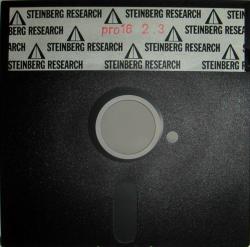Steinberg
It develops software for writing, recording, arranging and editing music, most notably Cubase, Nuendo, and Dorico.
It also designs audio and MIDI hardware interfaces,[1] controllers, and iOS/Android music apps including Cubasis.
The developers got acquainted with the recently released MIDI specification in 1982, as Rürup was working part time in the keyboard shop Amptown Hamburg.
The ST had built-in MIDI ports which helped to quickly increase interest in the new technology across the music world.
[9] In 1989, Steinberg released Cubase for Atari, and versions for the Mac and Windows platforms would follow soon afterwards.
Cubase was visualized by Wolfgang Kundrus, and implemented by a team including Werner Kracht, Stefan Scheffler, Michael Michaelis and Karl Steinberg who mainly contributed the run-time system M-ROS.
Atari support eventually ended, and Cubase became a Mac and Windows DAW (digital audio workstation), with feature parity across both platforms.
The WaveLab audio editing and mastering suite followed in 1995 for Windows, and the VST and ASIO protocols – open technologies that could be used by any manufacturer – were first released in 1997.
Steinberg was one of the first DAW manufacturers who started using automatic delay compensation for synchronization of different channels of the mixer which may have different latency.
VST simulates a real-time studio environment with EQs, effects, mixing and automation and has become a quasi-standard supported by many other audio editing programs.
[23] Initially developed for Macintosh only, Steinberg Cubase VST for the PC followed a year later and established VST and the Audio Stream Input/Output Protocol (ASIO) as open standards that enabled third parties to develop plug-ins and audio hardware.
